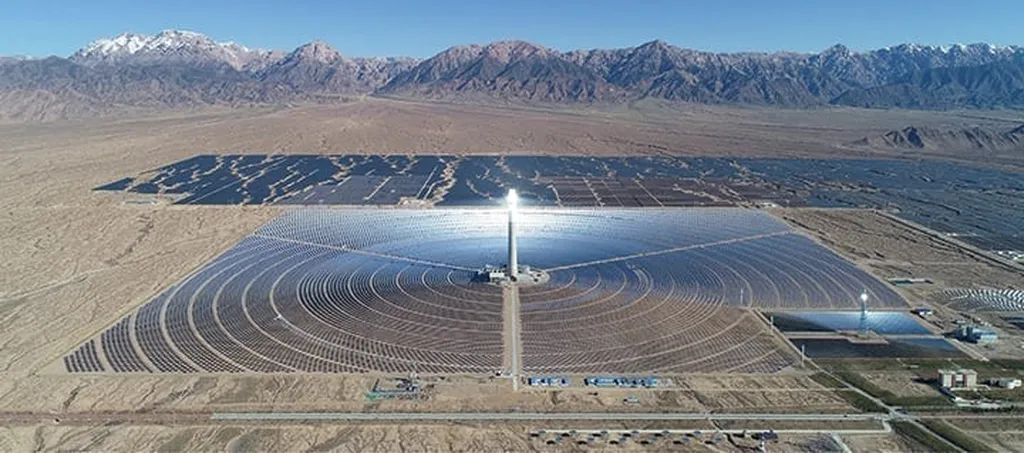In the heart of China’s ambitious renewable energy push, a groundbreaking concentrated solar power (CSP) plant in Delingha is making waves, and new research is shedding light on its impressive potential. The SUPCON Delingha 50 MW Molten Salt Solar Tower (MS ST) power plant, one of China’s first batch of 20 CSP demonstration projects, has been the subject of a detailed study led by Spiros Alexopoulos from FH Aachen. The findings, presented at the SolarPACES Conference Proceedings, offer a compelling glimpse into the future of dispatchable renewable energy.
Concentrated solar power is a stable, continuous, and dispatchable renewable energy technology, setting it apart from more intermittent sources like wind or photovoltaic solar. By incorporating large-capacity molten salt storage, CSP plants can provide grid-friendly electricity with minimal carbon emissions throughout their lifetime. This is a significant advantage over traditional fossil fuel power plants, and it’s one that’s catching the attention of developing nations like Saudi Arabia and Morocco, as well as global economic powerhouses like China.
The Delingha plant, with its 7-hour molten salt storage system, is a testament to this technology’s potential. Alexopoulos and his team developed a model of the plant using the System Advisor Model (SAM) to simulate its annual electrical output performance. The results were striking: the simulated output was a mere 3.6 GWhe less than the design value, a difference of less than 5%. “This close alignment between simulation and design values is a strong indicator of the plant’s efficiency and the robustness of the modeling approach,” Alexopoulos noted.
The implications for the energy sector are substantial. As Alexopoulos explained, “This research not only validates the performance of the Delingha plant but also provides a solid foundation for the development of future CSP projects.” The ability to accurately model and simulate CSP plants can significantly reduce the risks and uncertainties associated with their deployment, making them more attractive to investors and energy providers.
Moreover, the success of the Delingha plant and the insights gained from this research could accelerate the adoption of CSP technology in other regions. As countries worldwide strive to meet their renewable energy targets and reduce carbon emissions, dispatchable technologies like CSP will play a crucial role. The Delingha plant’s performance demonstrates that CSP can be a reliable and efficient part of the energy mix, even in challenging environments.
The research also highlights the importance of continuous innovation and improvement in the field. As Alexopoulos pointed out, “There’s always room for enhancement, and the slight discrepancy between the simulated and design values presents an opportunity for further investigation and optimization.” This ongoing pursuit of excellence is what will drive the CSP industry forward, making it an increasingly viable and attractive option for energy providers and consumers alike.
In the quest for a sustainable energy future, the Delingha plant and the research led by Alexopoulos represent a significant step forward. As the world grapples with the challenges of climate change and the need for clean, reliable energy, the insights gained from this study will undoubtedly shape the development of CSP technology and its role in the global energy landscape. With the findings presented at the SolarPACES Conference Proceedings, the stage is set for a new era of innovation and growth in the concentrated solar power sector.

